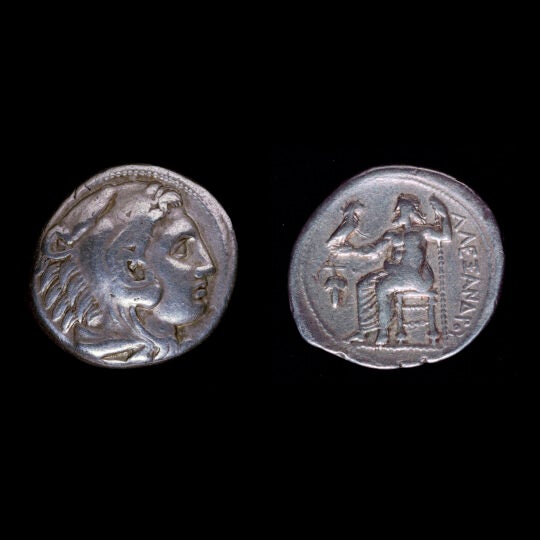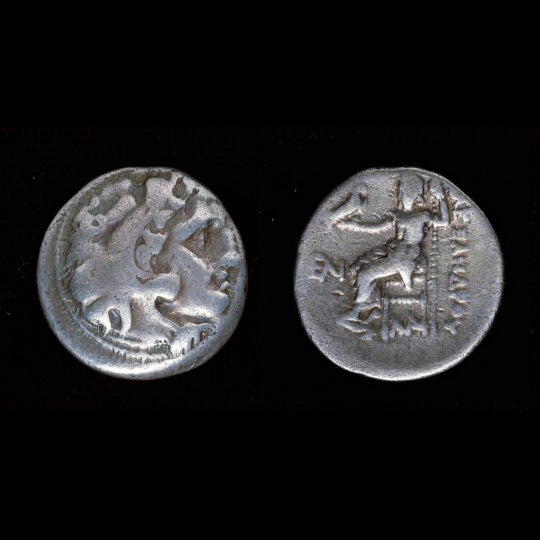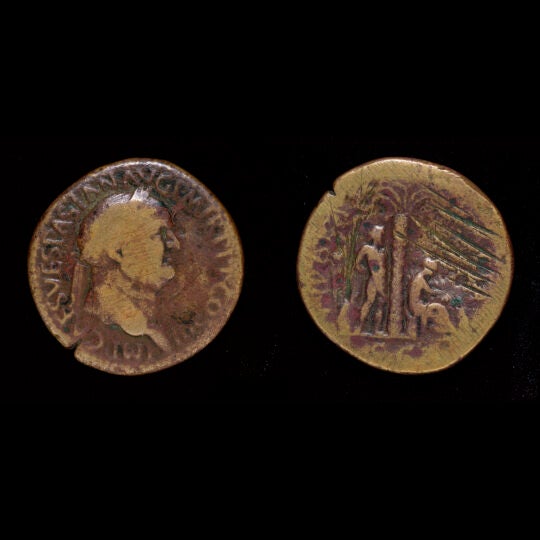Today when we want to buy something, we pay with money, usually in the form of paper or coins, if we are paying cash. For much of the world, for much of history, however, money was not used as the basis for exchange, and what we think of as money, coins, were not used until the 7th century B.C.
Coins first were used by the Greeks, although metal in some form was used earlier in many other parts of the ancient world to purchase goods or services. The first coins were used in the Lydian kingdom, in the area of eastern Turkey, and soon spread to other parts of the Greek world, then beyond to other cultures and realms.
Coins were usually made by placing a piece of metal of the right type or weight between two dies which had been carved with the appropriate likenesses, symbols, and inscriptions. The dies were struck with a sledge-hammer to create an impression on both sides of the metal. Images found on coins could include the heads of rulers, symbols of cities, and inscriptions, or, in earlier times, simple geometric shapes.
First Jewish Revolt Year 3 Silver Shekel, 68/69 CE. USC ID# 10534
When the Jews revolted against Rome in the year 65 C.E., they minted their own coins as a symbol of their break from the Roman Emperor. This coin was minted during the third year of the revolt. The obverse (left) shows a Temple vessel, and the inscription “Shekel of Israel” in paleo-Hebrew, the archaic Hebrew alphabet. The reverse depicts pomegranates, and the inscription “Jerusalem the Holy.”
Photograph by Johnna Tyrrell, West Semitic Research. Courtesy USC Archaeological Research Collection.

Greek and Roman coins
Below are examples of Greek and Roman coins in the University of Southern California Archaeological Research Collection. The first two are coins produced under Alexander the Great between 332-321 B.C. The third coin was made under the Emperor Vespasian, who ruled the Roman Empire from A.D. 69-79.
Photographs by West Semitic Research. Courtesy USC Archaeological Research Collection.
Alexander III Coin: Macedon Tetradrachma
Obverse: Head of Herakles facing right, wearing lionskin headdress. Reverse: Zeus seated facing left, right leg drawn back, holding eagle and sceptre. The name of Alexander appears on the right.
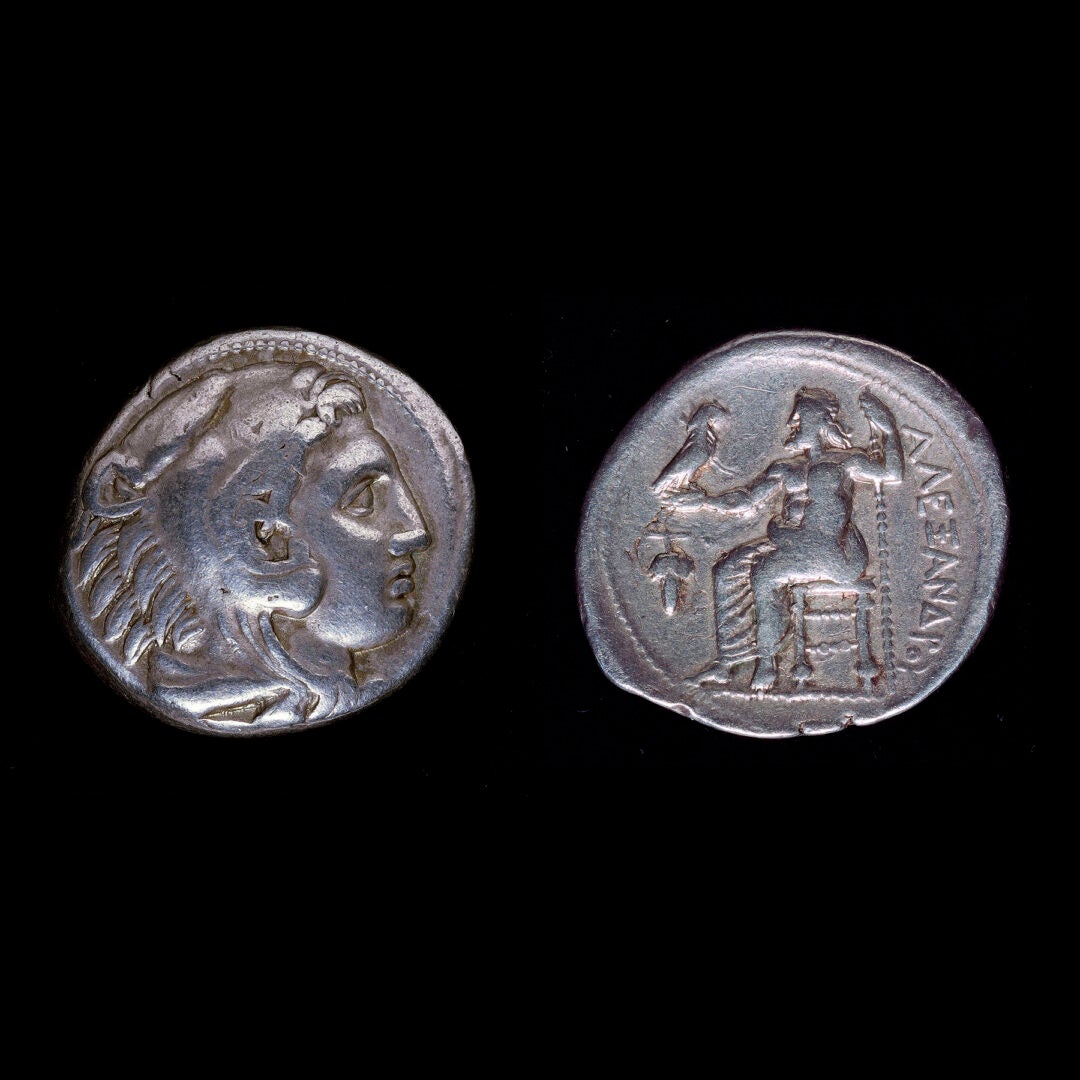
Alexander III, the Great, Drachma: Macedon c. 325 BCE
Obverse: Head of Herakles facing right, wearing lionskin headdress. Reverse: Zeus seated facing left, right leg drawn back, holding eagle and sceptre. The name of Alexander appears on the right.
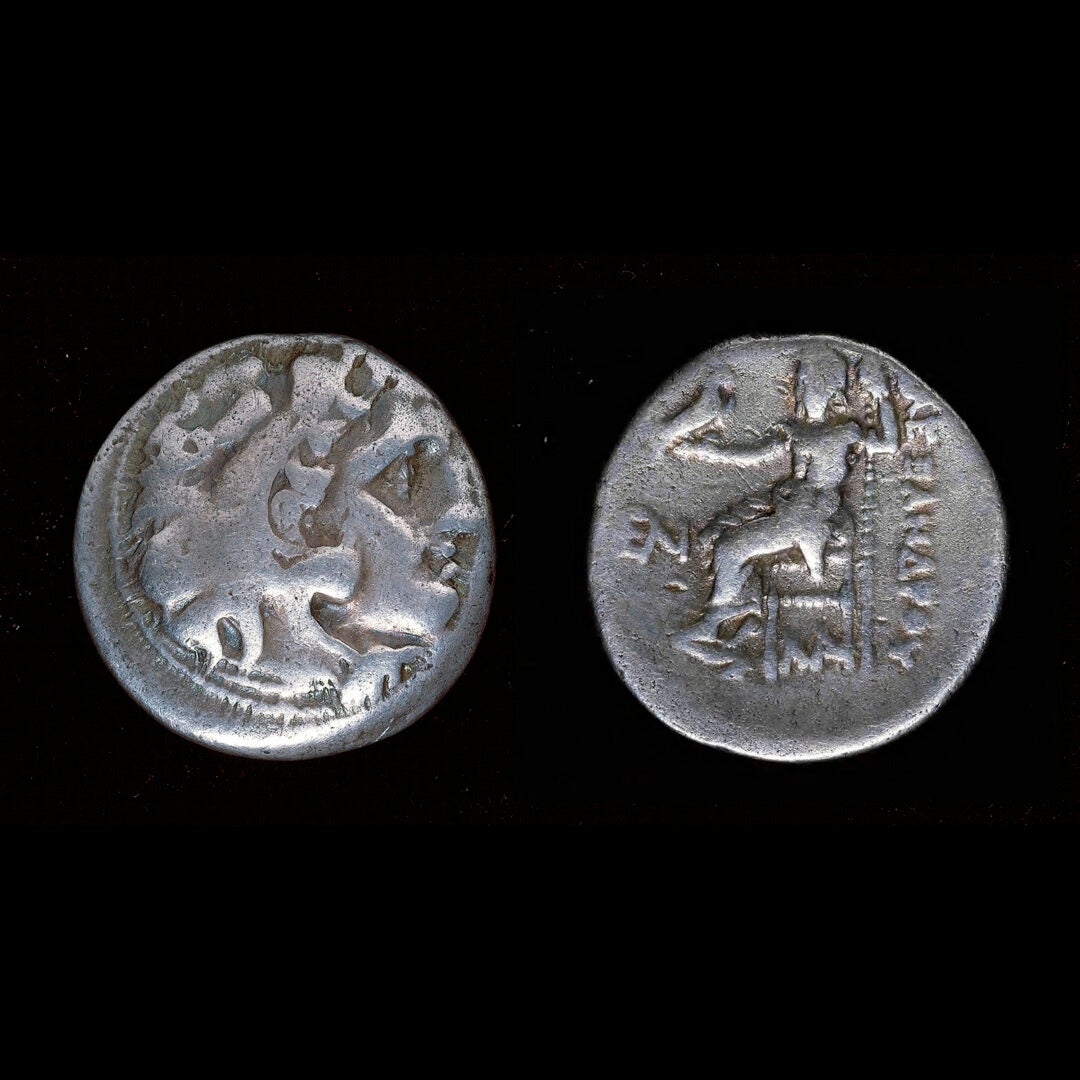
Caesar Vespasian Coin, Judea Capta
Obverse: head of Vespasian facing right with inscription. Reverse: palm tree in center with two bunches of dates, Vespasian (on left), standing facing right in military dress, and Jewess (on right), seated facing right, right arm on knee, left hand propping head in attitude of mourning.
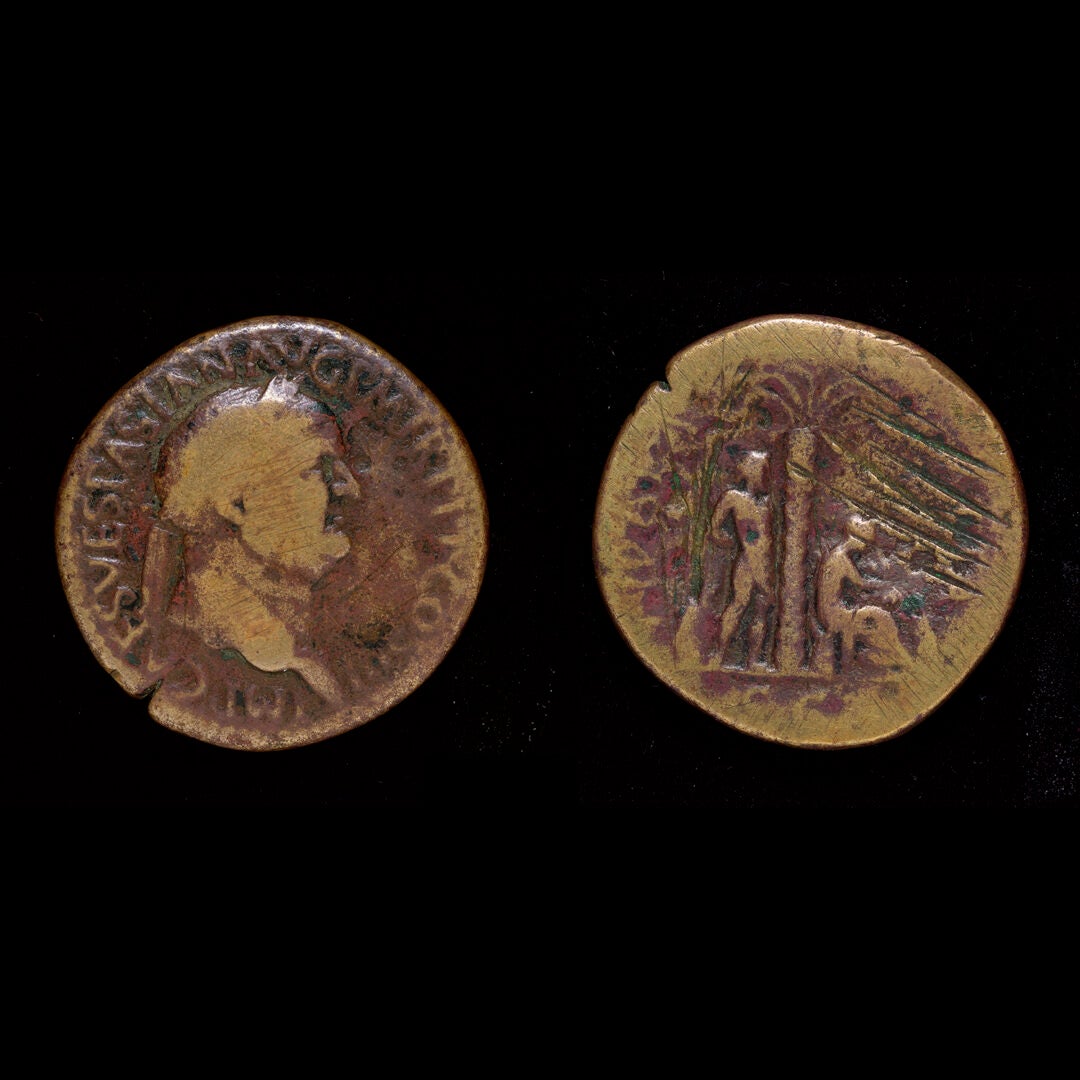
Inscriptions and Artifacts in the USC Archaeology Research Center
- Etruscan Lion Plaque Pendant A gold pendant from 650-600 B.C.
- Statue of Isis A gold statue of the Egyptian goddess Isis.
- Deity on a Bull A small sacred figurine from the area of Syria-Palestine.
- Egyptian Ushabti An ancient Egyptian representation of a mummy.
- Sasanian Seals Seals with animal designs from ancient Iran.
- Seals Assorted seals.
- Coins Caesar Vespasian and Alexander III Coins.
- Bullae Roman Period Bullae (Seal Impressions).
- USC Archaeology Research Center Web Site
Article Categories
Non-Biblical Ancient Texts Relating to the Biblical World: Non-biblical inscriptions and documents from ancient times that improve our understanding of the world of the Bible.
Biblical Manuscripts: Images and commentary on ancient and medieval copies of the Bible.
Dead Sea Scrolls: Images and commentary on selected Dead Sea Scrolls manuscripts.
USC Archaeology Research Center: Images of artifacts from the teaching collection of the University of Southern California.
